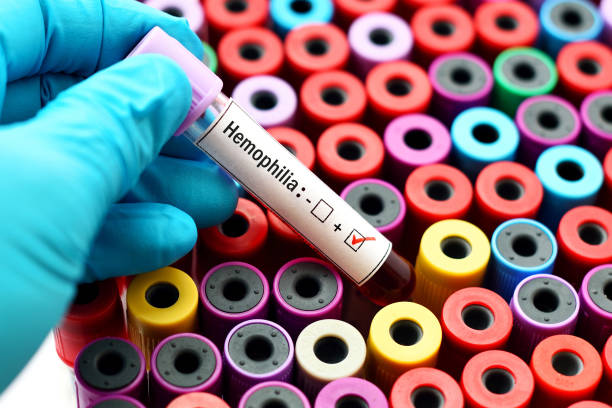
Haemophilia is an inherited genetic disorder in which blood doesn't clot normally, resulting in excessive bleeding that can be both external and internal. This form of unexplained bleeding occurs after any injury or damage.
Blood clots are essential to stop bleeding. People with haemophilia suffer bleeding for a longer time after an injury. This further leads to easy bruising and an increased risk of bleeding inside the joints or the brain.
Bleeding due to haemophilia if occurs in a joint, it can lead to permanent damage, and bleeding in the brain can even result in long-term headaches, seizures, or decreased level of consciousness.
Types of Haemophilia
Though there are a few different types of hemophilia, the most common ones are:
HAEMOPHILIA "A"
Also known as Classical Haemophilia, haemophilia A resulting from a congenital deficit of factor VIII causing excessive bleeding. Without enough factor VIII, the blood cannot clot properly to control bleeding. Haemophilia A generally affects males more than females and the major symptoms are internal and external bleeding. Prolonged bleeding from venepuncture is an early symptom of haemophilia A.
HAEMOPHILIA "B"
Hemophilia B is also a hereditary bleeding disorder that is caused by lack of blood clotting factor IX, without which the blood cannot clot properly to control bleeding. Hemophilia B results from an inherited X-linked recessive trait, where the defective gene is located on the X chromosome.
Diagnosis
Since haemophilia is an inherited genetic disorder, families with a history of hemophilia can determine if the fetus is affected by hemophilia during their pregnancy itself.
Around one-third of babies who are diagnosed with hemophilia have no other family members with the disorder. So in such cases, a doctor might determine to check for hemophilia if the newborn is showing certain signs of hemophilia.
Screening tests are performed to diagnose haemophilia and it includes:
Complete Blood Count (CBC)
The CBC that measures the amount of hemoglobin, the size and number of red blood cells and numbers of different types of white blood cells and platelets found in blood, is normal in people without haemophilia. Whereas the hemoglobin and the red blood cell count can be low in people with excessive bleeding owing to haemophilia.
Activated Partial Thromboplastin Time (APTT) Test
This test measures the time it takes for the blood to clot and also the clotting ability of factors VIII (8), IX (9), XI (11), and XII (12). If the test shows that any of these clotting factors are too low, it's indicative that it takes longer than normal for the blood to clot. So in people with haemophilia A or B, the results will show a longer clotting time.
Prothrombin Time (PT) Test
This test also measures the time it takes for blood to clot. It measures primarily the clotting ability of factors I (1), II (2), V (5), VII (7), and X (10). If any of these factors are too low, it takes longer than normal for the blood to clot. The results of this test will be normal among most people with hemophilia A and B.
Fibrinogen Test
This test helps to assess a patient’s ability to form a blood clot. This test is ordered either along with other blood clotting tests or when a patient has an abnormal PT or APTT test result, or both. Fibrinogen is another name for clotting factor I (1).
Clotting Factor Tests
Also known as factor assays, this test diagnoses a bleeding disorder. The test helps to determine the type of hemophilia and the severity, which are essential factors to decide the best treatment plan.
Treatment of Haemophilia
The most common treatment is to get a replacement of the specific clotting through a tube placed in a vein. This form of replacement therapy can combat bleeding episodes that are in progress. The replacement clotting factor can be made from donated blood.
The other forms of therapies include:
- Desmopressin
- Clot-preserving medications
- Fibrin sealants
- Physical therapy
- First aid for minor cuts
- vaccinations
Conclusion
The principal aim of care with haemophilia is to avoid and treat bleeding. Early detection, timely follow-up, and precise treatment plans, all play a significant part in improving patients' prognosis.

